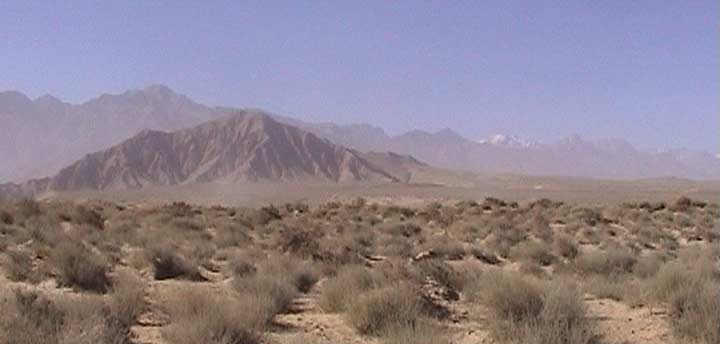
THE TAKLAMAKAN
DESERT
The
Taklamakan Desert, (
also known as the TARIM DESERT )
spans
1500 kilometers from east to west. Fringing the entire length of its southern
border are the mighty 5000-7000 meter high peaks of the Kun-Lun Mountain Range,
not only some of the highest peaks of Asia, but of the world. Water, melting
from the ice-capped summits, erodes the steep slopes, etching its way down
into the valleys to form fast-flowing rivers. These rivers bring life into
the Taklamakan. Without them, their would be none. They nourish the "necklace"
of oases that rim like jewels the merciless, barren desert, whose name in
the local Uygur language means literally: "you go in, but never come
out!"
As we drive for hundreds of miles through inhospitable desert, there is a
stark contrast at the approach of any oasis.The welcoming "dolce vita"
ambience is an instantly felt reprieve under shady poplar trees, cooling the
passage to grape-trellessed courtyards and earthen homes.
Over the centuries, the ingenuity of the Uygurs paid off. They borrowed the
ancient Persian technique of underground irrigation, creating canals from
which water does not evaporate, turning desert into farmland. Although it
is one of the most remote land-locked places on earth, farthest from any ocean,
the Uygurs produce rich and varied crops including ten varieties of grapes,
most of the indigenous melons of the planet, pomegranates, walnuts, yellow
carrots, and cotton.
Throughout this film, we witness a wide range of cultural subjects and the
proof that age-old techniques of "Artisanat" live on today, just
as thousands of years ago. There will be scenes of this rich tradition of
art and daily life woven together, like an intricate designed silk carpet on
a Uygur loom.